Who’s who in the swallow family?
These agile migrants travel thousands of miles to herald the start of warmer months, but which ones are which?
If you’re anything like me, you have been craving fresh air and relishing the opportunity to get outdoors for your exercise allowance – which for me doubles up as a chance to see what wildlife is out and about. It also gives me a chance to remind myself that, as much as it feels like things have ground to a halt, the natural cycle of the seasons marches on: rowan trees are now frothy with flowers, young birds are starting to fledge, and yet others have arrived from their winters spent in far-off lands.
Some of the most impressive of these migrants belong to the swallow family, and they have become a familiar feature of my walks of late. They perch on the telegraph wires in my street, swoop around the eaves of the houses and gather in big groups over the Clyde where it flows past, criss-crossing the water in search of gnats and insects and filling the air with their chirping calls.
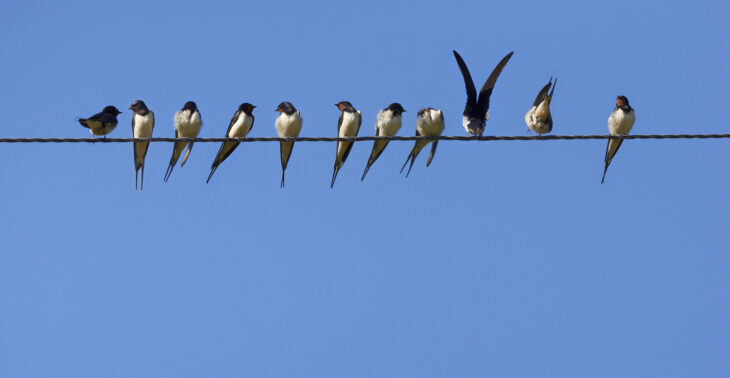
But which ones are which? In the UK, three members of the swallow family (Hirundininae) grace us with their summer presence. How can you tell them apart? How do their habits differ? Here’s everything you need to know.
Barn Swallow (Hirundo rustica).
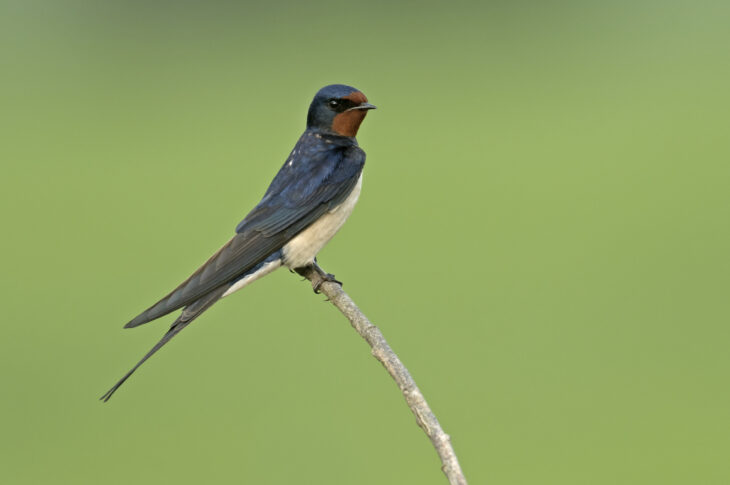
The most distinctive of the three due to their long forked tails, swallows are easy to recognise even in silhouette. They have dark, metallic blue plumage and red throats that set them apart from martins. You’ll also see them feeding lower to the ground – look out for them drinking on the wing, flying low to the surface of ponds and rivers to sip the water.
Curiously, the swallows that summer in the UK travel further than those that spend the warmer months in Europe. While European barn swallows generally overwinter in the Sahara, the ones you might see from your window in Scotland have likely come all the way from South Africa or Botswana – a trip of over 6000 miles!
House Martin (Delichon urbicum)
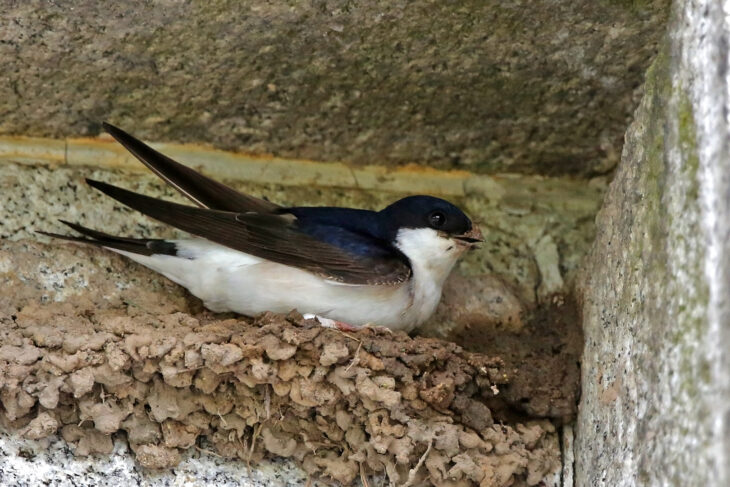
A much squatter-looking bird than the barn swallow, look out for the house martin’s distinctive white patch at the top of a short forked tail. Like barn swallows, house martins tend to feed on the wing, something for which their short beaks and wide-opening mouths are well-adapted.
House martins are one of our most social birds, sometimes nesting in colonies numbering in the hundreds. You can often see them building and maintaining nests under the roofs of buildings, looking like piles of mud thrown at the wall. The female birds prepare these dwellings beakful-by-beakful – with each nest made up of more than 1,000 pellets over the course of around 10 days. These nests might be used again in following years, but only if they can fight off competition from opportunistic house sparrows, who will use them in their absence!
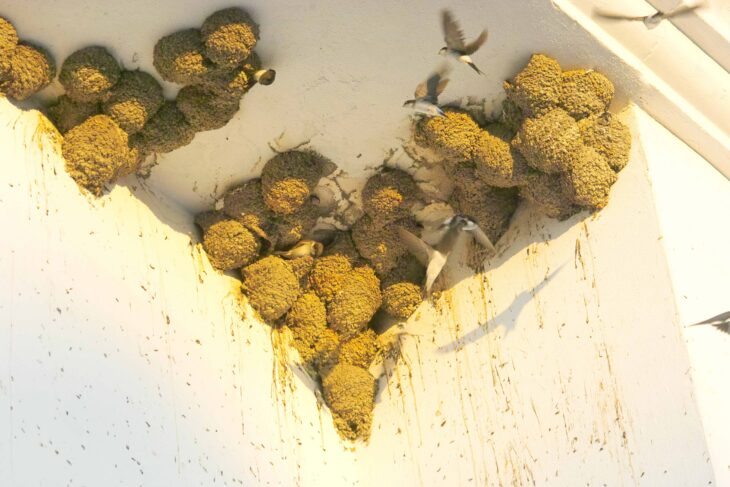
Sand Martin (Riparia riparia)
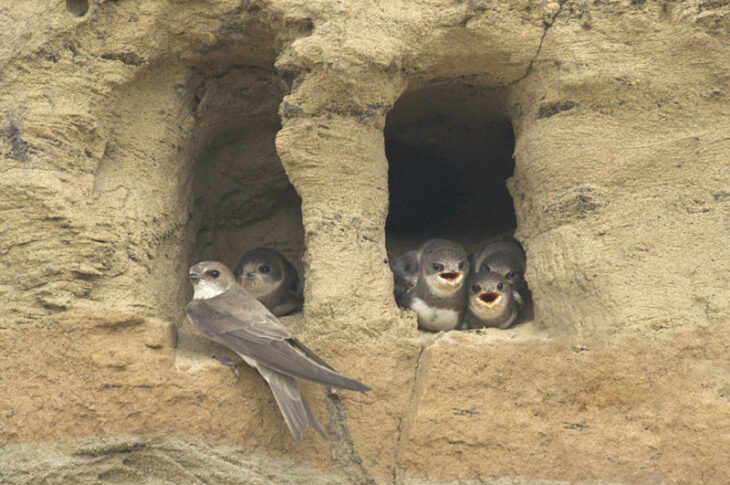
Unlike the other two species, sand martins are noticeably brown on their upper parts and white below, with a brown band across the breast. They are smaller than house martins, and their flight is jerkier. The bird’s latin name comes from the word for ‘bank’, which gives you a clue about where they tend to live: in burrows dug into vertical features such as sandy cliffs or riverbanks. Tunnels leading to the nest can be up to three or four feet in length, and the nest itself is lined with straw and feathers.
Many swallow-family members will utilise artificial nests if they seem suitable for rearing young. At the Falls of Clyde we have constructed a special sand box which we are hoping sand martins will be attracted to – their aerial acrobatics over the river would be a very welcome addition to the reserve’s wildlife.
Swallows and martins tend to do well where there is human habitation (as long as there are plenty of insects), so whether you live in the countryside, a village or in town, there’s a type of swallow for you. I hope you’ll enjoy watching them as much as I do.
Patrick Endall, Falls of Clyde Seasonal Ranger
Help protect Scotland’s wildlife
Our work to save Scotland’s wildlife is made possible thanks to the generosity of our members and supporters.
Join today from just £3 a month to help protect the species you love.
Preface
These agile migrants travel thousands of miles to herald the start of warmer months, but which ones are which? If you’re anything like me, you have been craving fresh air …
